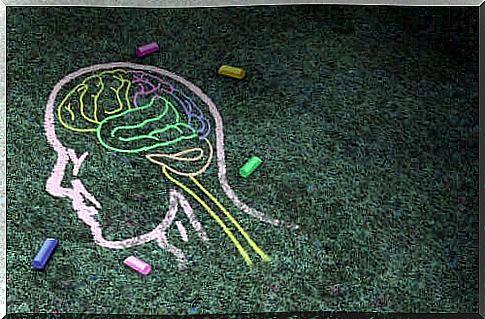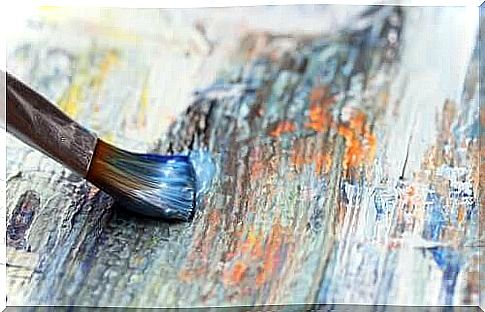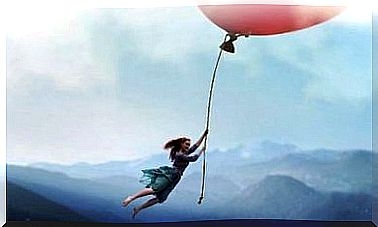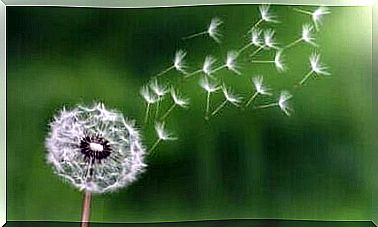Art Psychology: Concepts And Characteristics

Art psychology is a field in psychology that studies creativity and artistic appreciation from a psychological point of view. The goals of art psychology are similar to those pursued by other related disciplines in psychology.
Here we can include the disciplines that study basic processes, such as perception, memory and emotions, as well as the higher functions of thoughts and language.
However, the goal of this discipline is not only practical but also theoretical. This discipline seeks to work through theories of both creative and insightful activity. In doing so, however, it does not abolish the basic concepts and principles of scientific psychology.

Art psychology and disciplines
Art psychology includes not only its own fields but also those that are studied by psychology as they are related.
Psychology, developmental psychology, psychopathology and personality studies are all areas that art has a relationship to because of the different aspects they have in common. The truth is that this discipline is a rather complex area to study.
For many countries, art psychology is a new discipline. There are a huge number of reference works in English. In other countries there are not so many. In addition to this, most of these texts are based on psychoanalysis.
This discipline also maintains a relationship with other disciplines, such as philosophy. This contribution comes from its foundation with the understanding of aesthetic phenomena. The contribution of art history is also relevant because the works can be analyzed from a psychological point of view.
The life path of art psychology
Many psychotherapists have wanted to study and test the healing effects of art, both individually and in groups. We know the field of study that combines psychological elements with artistic elements, such as art therapy .
Art therapy emerged decades ago through rehabilitation programs that used techniques such as writing, music, painting, etc. Despite this, incorporation into the clinical environment is still slow and problematic.
However, the so-called art psychology has become popular. It is based on the development of creativity and the reduction of stress and anxiety thanks to learning about classical art techniques (painting, sculpture and contemporary plastic art).
Psychologists with expertise in the field of plastic art can use creative production as a mediator in therapeutic relationships. By doing this, they can address issues related to psychism, subjectivity, culture, and society.
There have been many different contributions to this discipline. The Gestalt School, Gustav Fechner, Sigmund Freud, Vygotsky and Gardner have been the primary authors who have developed a relevant role in the creation of the discipline.
For Vygotsky, the highest degree of courtesy is the expression of art and culture, and works are a means of socio-historical development. His doctoral dissertation on art psychology was a milestone in psychology. This was the case because it appealed to the “unconscious” to define the essential aspects of art.
Vygotsky, however, was aware that art was not a primary or physiological need, thereby taking Abraham Maslow’s point of view into account.
Furthermore, he claimed that the unconscious aspect of art was not comparable to the dreamlike, unconscious processes. He maintained that art is more like a step towards the latent unconscious of human beings in the midst of their vigilance.

Psychological benefits of art
Experts have recently discovered that painting makes it possible to release dopamine. It is the hormone that contributes to the feeling of reward. Furthermore, endorphins are released, which are hormones that give the feeling of well-being. The latter are released, for example, when we train.
On the other hand, we know that when you complete a work of art, it contributes to a feeling of joy that is very similar to the feeling experienced when you have children. This is due to the release of oxytocin.
Some of the main benefits are the following:
- Development of social skills.
- Relief from stress and anxiety.
- Mental well-being.
- Behavior control.
- Work on the unconscious as a method of knowledge.
In short, part of the origins of art psychology is Vygotsky’s introductory thesis, although it is a recent discipline. This thesis is considered to be a method of self-knowledge when working with the unconscious. It is also an essential element to study within the various branches of psychology.
For example, in the context of psychological assessment, it is used in response to more specific interests of the evaluator, while experts use it as a therapeutic tool or to promote self-awareness in art therapy workshops.
Being aware of art psychology opens the doors to a wonderful world of expression in any field of artistic manifestation.









